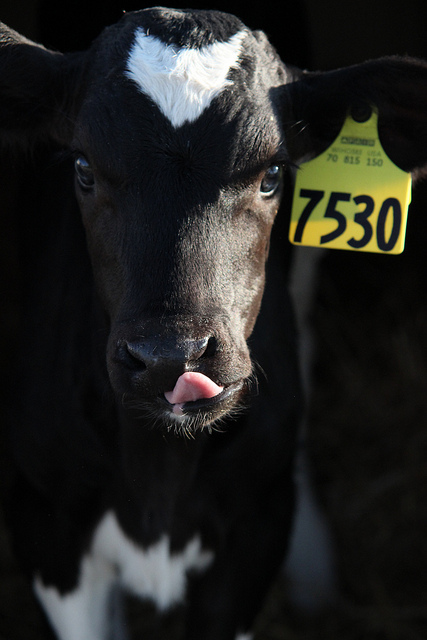On Henry Mall
Greener Pastures
Dairy science gets personal to reverse enrollment trend.

It wasn’t long ago that Ted Halbach’s dairy cattle selection course—one of the first classes taken by new dairy science majors—felt a little too select.
“In 2005, I had six students,” says Halbach, who has taught the class since 1999. “You don’t have the diversity of opinion among students that you get with classes of 15 to 30 students.”
These days, it’s a different story. Halbach’s class is full, buoyed by a bumper crop of 29 new dairy-science majors, more than triple its entering class from three years ago.
For one of UW-Madison’s oldest and most traditional fields, that’s a remarkable reversal of fortune. Since enrolling 189 undergraduate students in 1982, dairy science has seen a steady decline in popularity, and by 2004, fewer than 60 students were majoring in the field. That fall, just eight students signed on, raising concerns that dairy was falling off the modern student’s radar.
“One of the ways we serve the dairy industry is by providing employees, and we weren’t filling the pipeline,” says department chair Ric Grummer BS’77. “There was a concern that maybe we were letting down our clientele.”
The department responded by overhauling its curriculum and revamping its public relations materials. It also changed its philosophy toward recruiting new students.
“I think the thing that clicked for me was that it’s about what kind of experience a student can have here,” says Halbach, who coordinates the department’s recruiting. “While our rankings are nice, kids don’t make their decisions based on how we’re ranked. They want to know what their lives will be like if they come here.
When talking to students, Halbach now trumpets the campus and its location in “the heart of dairy,” as the department’s new materials describe it. More important is how he delivers those messages. As a youth extension specialist, he travels regularly to shows and fairs to talk one-on-one with prospective students. At last year’s state FFA convention, for instance, he enticed more than 200 students to fill out information sheets by entering them in a drawing for an iPod.
“Our booth looked like a riot scene,” he says. “I had to recruit my daughter to help hand out forms.”
Other factors have contributed to the comeback, including a significant bump in scholarship money and a change in UW-Madison’s admissions policies, which speeds decisions for qualified students interested in agricultural fields. An improving climate for agriculture also helps. Nationally, student membership in FFA is up, eclipsing a half million for the first time since 1978.
But ultimately, the most significant thing Halbach and his colleagues have done to reverse the enrollment trend is to take it personally, winning the recruiting battle one student at a time.
“Ted has made heroic efforts to seek new students and get them to commit to the UW-Madison dairy science program,” says Robert Ray, associate dean for undergraduate programs at CALS. “Dairy science is reaching potential students who are in some cases in middle school.”
This article was posted in Agriculture, Around the college, On Henry Mall, Winter 2008 and tagged Dairy, Dairy science, Undergraduate students.
